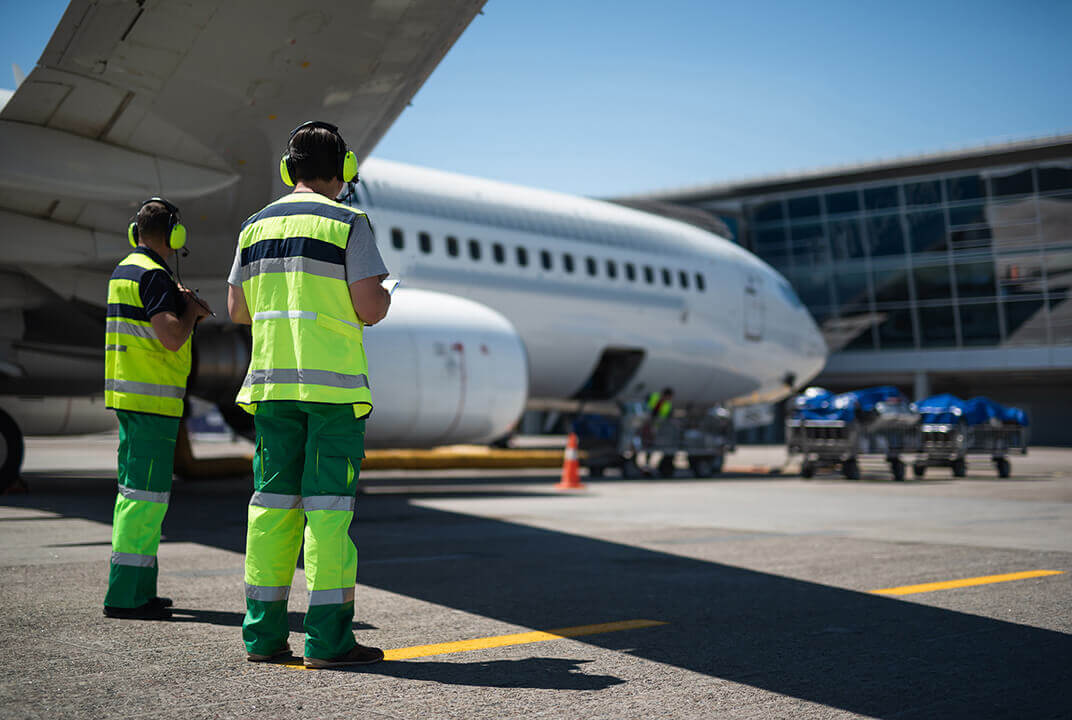Inmarsat and European Space Agency (ESA) complete major milestone toward air traffic modernisation
Successful Iris programme test flight brings opportunity for alleviation of airspace congestion, reduction in flight times and delays, and enhanced safety a step closer
Inmarsat, the world’s leading provider of global mobile satellite communications, and the European Space Agency (ESA), have successfully completed the first test flight using the world’s most advanced aviation satellite technology for their Iris programme in support of European air traffic modernisation. The evaluation is a significant step forward in realising more precise flight surveillance and more efficient air traffic management.
The Iris programme is a public-private partnership, sponsored by ESA and led by Inmarsat to enable secure, high bandwidth datalink communications over Europe. The three-hour test flight, which departed from Amsterdam Schiphol Airport, was supported by the Iris technology partners Honeywell, CGI and SITAONAIR using Inmarsat’s SB-S L-band service. Using a Cessna Citation II aircraft provided by Dutch company NLR, a number of real-time communication exchanges were completed between the cockpit and flight control facility over continental and oceanic airspace.
The evaluation moves the Iris programme a step closer to enabling SESAR’s concept of pinpointing aircraft in four dimensions (4D) – latitude, longitude, altitude and time – which results in more precise flight tracking and more efficient air traffic management. This allows pilots and controllers to calculate the shortest available routes, cruise at optimum altitudes, and use continuous climb and descent paths, saving fuel and lessening environmental impact.
John Broughton, Inmarsat’s Vice President of Aviation Safety and Operational Services, said: “The results of our highly-successful test flight with ESA bring the Iris programme a step closer to certification by the European Aviation Safety Authority (EASA) and making this ground-breaking technology commercially available for airlines. With terrestrial datalink technologies reaching their capacity limits in the next ten years, the Iris programme has become an even more essential part of the Single European Sky initiative.
“Our previous test flights were conducted during the Iris development phase, using a combination of simulated systems and existing terminals. The fact that we have now have flown with the programme’s actual avionics system shows the excellent progress being made. All performance objectives were met and now the Iris consortium moves on to the next major milestone the objective of making Iris an operational system in 2020.”
Large-scale validation of the Iris programme is expected to be carried out by the first airlines in 2020, with a fully-operational service targeted for the following year. These are key milestones for Iris to then be integrated into the European Commission Datalink Strategy.
Magali Vaissiere, ESA’s Director of Telecommunications and Integrated Applications, said: “It’s important for Europe to address the issue of rising airline passenger volumes and limited airspace capacity. The fact that the Iris programme has been designed to enable more efficient, cost-effective air traffic management will be welcomed by the aviation industry, as well as airline passengers and Europe as a whole. The success of this recent test flight is testament to the continued efforts of our partners to deliver on the Iris promise.”
The Iris programme will enhance airspace utilisation and aviation safety, while reducing flight times, delays and CO2 emissions, all in support of the Single European Sky ATM Research (SESAR) masterplan. It will also heighten aircraft communications security through the use of security gateways, which provide a VPN (Virtual Private Network) barrier that securely connects flight management systems onboard the aircraft to corresponding systems used by air traffic controllers on the ground.
Powered by Inmarsat’s new SwiftBroadband-Safety (SB-S) platform, the enhanced IP-based capabilities will relieve pressure on crowded VHF (Very High Frequency) channels, which are near capacity, by moving pilot-controller communications from voice communications to high-speed data link (text messages).
Last month, the London School of Economics revealed the findings of the second instalment of Sky High Economics, a first-of-its-kind study into the socioeconomic benefits of operational connectivity for the aviation industry. The report predicts significant savings available to the industry through the use of satellite communications to modernise air traffic management, via initiatives such as the Iris programme. The study estimates that the benefits of migrating current systems to IP-based satcom like that of the Iris programme, automating aircraft position reporting and providing digital datalink communication between pilots and air traffic controllers could save the aviation industry in the future an estimated $3 billion annually.
FURTHER INFORMATION
About Inmarsat
Inmarsat is the leading provider of global mobile satellite communications services. Since 1979, Inmarsat has been providing reliable voice and high-speed data communications to governments, enterprises and other organisations, with a range of services that can be used on land, at sea or in the air. Inmarsat operates around the world, with a presence in the major ports and centres of commerce on every continent. Inmarsat is listed on the London Stock Exchange (ISAT.L). The Inmarsat press release newsfeed and corporate updates are on @InmarsatGlobal.
About the European Space Agency
The European Space Agency (ESA) provides Europe’s gateway to space.
ESA is an intergovernmental organisation, created in 1975, with the mission to shape the development of Europe’s space capability and ensure that investment in space delivers benefits to the citizens of Europe and the world.
ESA has 22 Member States: Austria, Belgium, the Czech Republic, Denmark, Estonia, Finland, France, Germany, Greece, Hungary, Ireland, Italy, Luxembourg, the Netherlands, Norway, Poland, Portugal, Romania, Spain, Sweden, Switzerland and the United Kingdom. Slovenia is an Associate Member.
ESA has established formal cooperation with six Member States of the EU. Canada takes part in some ESA programmes under a Cooperation Agreement.
By coordinating the financial and intellectual resources of its members, ESA can undertake programmes and activities far beyond the scope of any single European country. It is working in particular with the EU on implementing the Galileo and Copernicus programmes as well as with Eumetsat for the development of meteorological missions.
ESA develops the launchers, spacecraft and ground facilities needed to keep Europe at the forefront of global space activities.
Today, it develops and launches satellites for Earth observation, navigation, telecommunications and astronomy, sends probes to the far reaches of the Solar System and cooperates in the human exploration of space. ESA also has a strong applications programme developing services in Earth observation, navigation and telecommunications.
Learn more about ESA at www.esa.int
Jonathan Sinnatt/Alison Stokes
Inmarsat Corporate Communications
+44 (0)20 7728 1935/1492
jonathan.sinnatt@inmarsat.com / alison.stokes@inmarsat.com
Robeel Haq
Inmarsat Aviation PR
+44 (0)20 7728 1352
robeel.haq@inmarsat.com
Giorgia Muirhead
ESA Telecom Communications Officer
+44 (0)1235 444 294
giorgia.muirhead@esa.int

